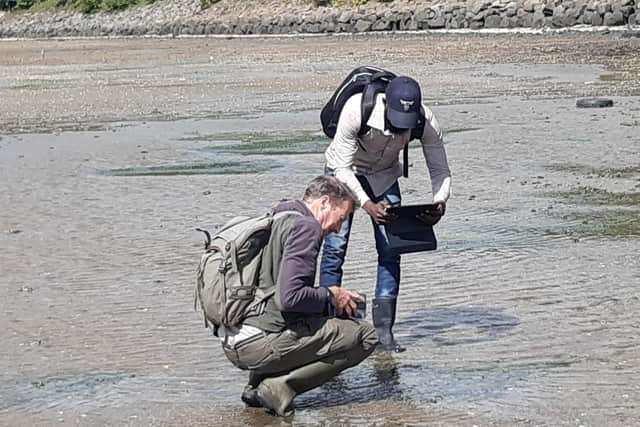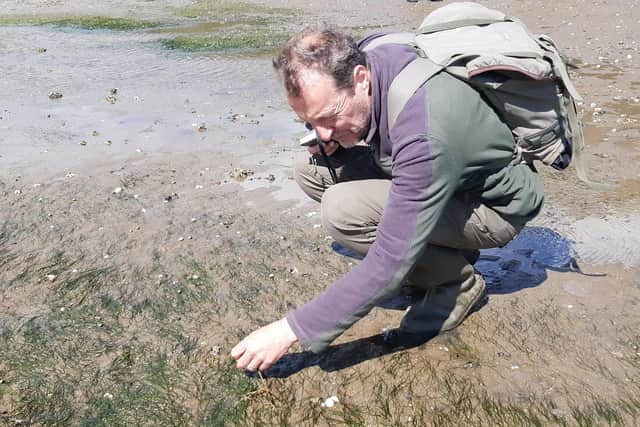£2.4m biodiversity project in Forth marks first year with 4000 people involved
and live on Freeview channel 276
And Kinghorn’s beachscape is of particular importance in the £2.4m ‘Restoration Forth’ project because it is the major site in the Forth for the larger seagrass, known Zostera marina.
It probably goes un-noticed by people walking the vast beach at low tide, but it is an important part of the river’s ecology.
Advertisement
Hide AdAdvertisement
Hide AdThe research will not only map the seagrass, but help marine biologists understand how it changes, and has changed over the generations - the team already knows seagrass has been part of the escape for over 200 years and Kinghorn is the oldest known bed in the Forth


The project is supported by up to £600,000 over three years from the Scottish Power Foundation’s marine biodiversity fund, which was set up to help provide a lasting legacy from the UN’s COP26 climate change conference held in Glasgow in 2021.
Managed by WWF, it seeks to restore seagrass which provides an important habitat for marine life and an incredible tool in the fight against climate change. Oyster reefs – which once flourished in the Forth – remove pollutants and provide sanctuary for a vast array of marine life.
A total of 40,000 seagrass seeds have been prepped for planting, with the project team visiting Orkney and working with the local community there to collect the seeds for replanting in the Forth.
Advertisement
Hide AdAdvertisement
Hide AdThey have also engaged more than 4000 people from the communities surrounding the Firth of Forth. School pupils, university students, researchers, fishing communities and an array of local groups have learned about the plans and how they can get involved. More than 100 events from walks and talks to seed processing days and school assemblies have taken place.


Melanie Hill, executive officer and trustee of the ScottishPower Foundation, said: “Restoration Forth is a shining example of how we can take action now to tackle the climate emergency.
“Thriving marine environments are vital if we’re to have any chance of addressing the biodiversity and climate crises we all face. Restoration Forth helps to do this and more, by engaging with the local community to educate them on the importance of these habitats to the wider ecosystem and our future.
ScottishPower Foundation’s grant was the first funding contribution towards the £2.4 million total cost of the project, which aims to restore up to four hectares of seagrass and 10,000 oysters per year by the end of 2024.
Advertisement
Hide AdAdvertisement
Hide AdNaomi Arnold, Restoration Forth project manager, said: ‘The level of interest and engagement in just the first year has been inspiring. The enthusiasm of our partners and funders but also, crucially, from members of the many communities that line the Forth showcases how a project like this can work for both the marine environment and the people who live by it.
“Restoring seagrass meadows and oyster beds brings a whole host of benefits, from improved water quality and increased biodiversity, to storing carbon and reduced coastal erosion. After a year of hard work and preparation, we are excited that this spring will see the start of seagrass planting and oyster deployment.”